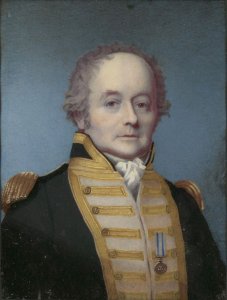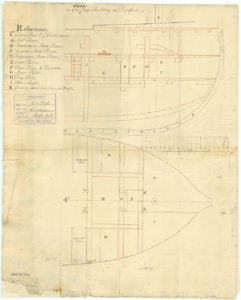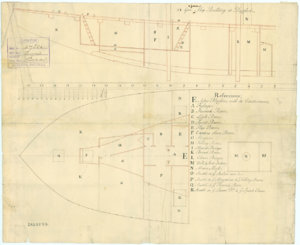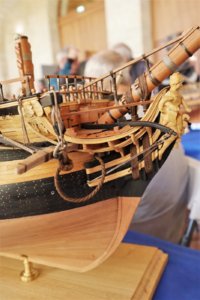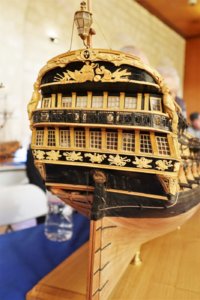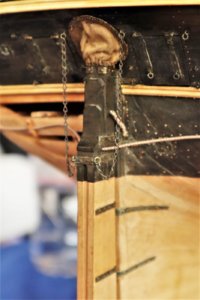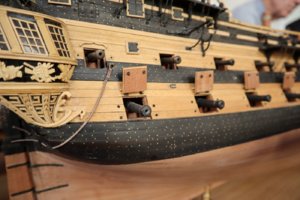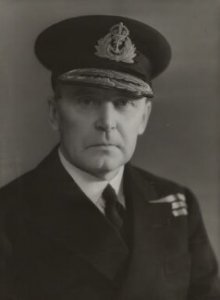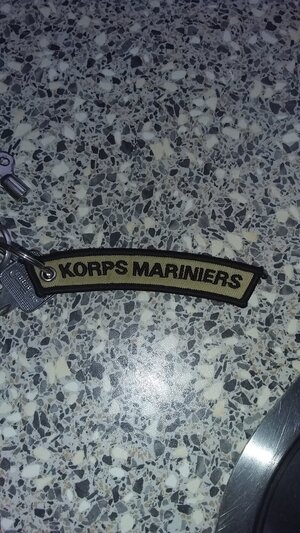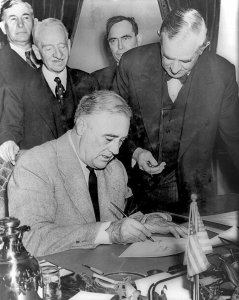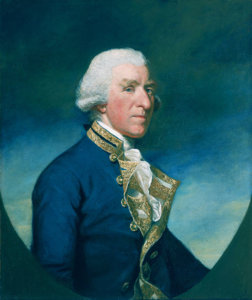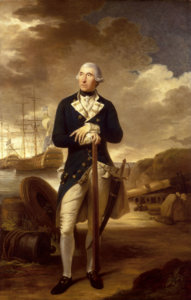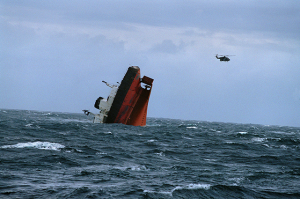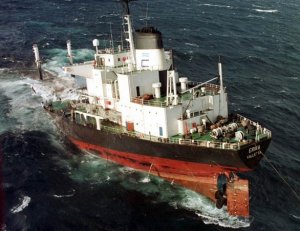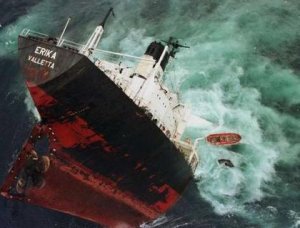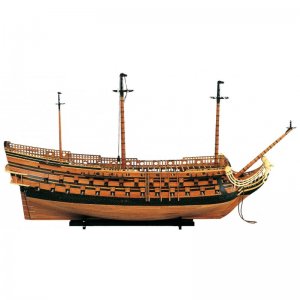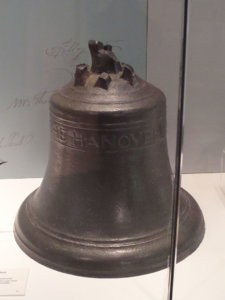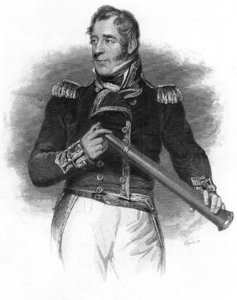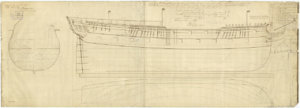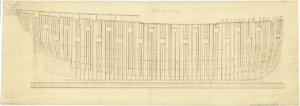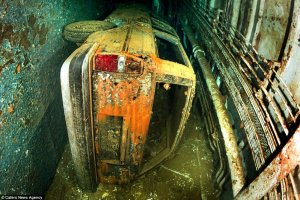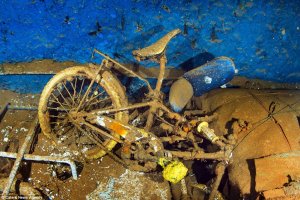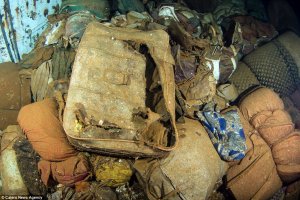Today in Naval History - Naval / Maritime Events in History
30th of November
some of the events you will find here,
please use the following link where you will find more details and all other events of this day .....
1652 - Battle of Dungeness.
Dutch fleet of 88 ships and 5 fireships, under Lt. Admiral Maarten Tromp, defeat English fleet of 42 ships, under Robert Blake
The naval Battle of Dungeness took place on 30 November 1652 (10 December Gregorian calendar), [a] during the First Anglo-Dutch War near the cape of Dungeness in Kent.

1780 – HMS Tamar (1758 – 16) captured at sea by 24-gun French privateer Duc de Chartres (1780 - 24)
HMS Tamar or Tamer was a 16-gun Favourite-class sloop-of-war of the Royal Navy.
The ship was launched in Saltash in 1758 and stationed in Newfoundland from 1763 to 1777.


Scale: 1:48. Plan showing the body plan, an outboard profile and plan view of the Tamar (1758), a 16-gun ship sloop. The plan specifically illustrates the jury rudder made on the return voyage to Britain after she lost her rudder through electrolysis between the copper sheathing and iron rudder pintles [see Mariner's Mirror, volume 87, No. 4 (Nov 2001)].
1803 - British squadron, under Commodore John Loring of HMS Bellerophon (1786 - 74) accepted the surrender of French vessels at Cape Francois, including French frigates Surveillante (1802 - 40), Vertu (1794 -40) and Clorinde (1800 - 40), which were threated by the insurgents.
The Blockade of Saint-Domingue was a naval campaign fought during the first months of the Napoleonic Wars, in which a series of British Royal Navy squadrons blockaded the French-held ports of Cap Français and Môle-Saint-Nicolas on the Northern coast of the French colony of Saint-Domingue.


Scale model of the Duquesne
1803 – The Balmis Smallpox Expedition starts in Spain with the aim of vaccinating millions against smallpox in Spanish America and Philippines - The First Public Health Vaccination Campaign in South America
The Balmis Expedition (1803–1806) was a three-year mission to Spanish America and Asia led by Dr. Francisco Javier de Balmis with the aim of vaccinating millions against smallpox. Vaccination, a much safer way to prevent smallpox than older methods such as inoculation, had been introduced by the English physician Edward Jenner in 1798.

1811 - French frigate Flore was wrecked in a heavy storm off Chioggia
Flore was a 44-gun Armide-class frigate of the French Navy.

1812 - HMS Subtle (1807 - 10), Lt. Charles Brown (2), capsized off St. Bartholomew's in the West Indies when chasing an American privateer, Jack's Favorite.
HMS Subtle was a schooner that the Royal Navy reportedly captured in 1807, and purchased and registered in 1808. She served in the Caribbean, taking part in several actions, including a small debacle in 1808, and the capture of Martinique and Guadeloupe in 1809. She foundered in November 1812 with the loss of her entire crew.

1853 – Crimean War: Battle of Sinop:
The Imperial Russian Navy under Pavel Nakhimov destroys the Ottoman fleet under Osman Pasha at Sinop, a sea port in northern Turkey.
The Battle of Sinop, or the Battle of Sinope, was a Russian naval victory over the Ottoman Empire during the Crimean War that took place on 30 November 1853 at Sinop, a sea port in northern Anatolia, when a squadron of Imperial Russian warships struck and defeated a squadron of Ottoman ships anchored in the harbor. The battle was a contributing factor to bringing France and Great Britain into the conflict. It is commemorated in Russia as a Day of Military Honour.

1881 - The whaler Rodgers is destroyed by a fire at St. Lawrence Bay on the Siberian coast. . Before the fire, Rodgers had charted Wrangel Island, proving conclusively that it was not part of the Asian continent.
USS Rodgers was a steamship in the United States Navy acquired to search for Jeannette in 1881.
On 3 March 1881, Congress, besieged by constituents as well as government agencies, appropriated $175,000 "to enable the Secretary of the Navy to charter, or purchase, equip, and supply a vessel for the prosecution of a search for the steamer 'Jeanette' and such other vessels as might be found to need assistance during said cruise; provided that the vessel be wholly manned by volunteers from the Navy." The "other vessels" of most immediate concern were two whalers, Vigilant and Mount Wollaston missing in the Arctic Ocean since 1879.

1942 – World War II: Battle of Tassafaronga;
A smaller squadron of Japanese destroyers led by Raizō Tanaka defeats a U.S. cruiser force under Carleton H. Wright.
The Battle of Tassafaronga, sometimes referred to as the Fourth Battle of Savo Island or, in Japanese sources, as the Battle of Lunga Point (ルンガ沖夜戦), was a nighttime naval battle that took place on November 30, 1942, between United States (US) Navy and Imperial Japanese Navy warships during the Guadalcanal campaign. The battle took place in Ironbottom Sound near the Tassafaronga area on Guadalcanal.

USS Minneapolis at Tulagi with torpedo damage

New Orleans near Tulagi the morning after the battle, showing everything missing forward of turret two
1994 – MS Achille Lauro catches fire and sinks 2 days after off the coast of Somalia.
MS Achille Lauro was a cruise ship based in Naples, Italy. Built between 1939 and 1947 as MS Willem Ruys, a passenger liner for the Rotterdamsche Lloyd, she was hijacked by members of the Palestine Liberation Front in 1985.
In other incidents, she also suffered two serious collisions (in 1953 with the MS Oranje and in 1975 with the cargo ship Youseff) and four onboard fires or explosions (in 1965, 1972, 1981, and 1994). In the last of these, in 1994, the ship caught fire and sank in the Indian Ocean off Somalia.

30th of November
some of the events you will find here,
please use the following link where you will find more details and all other events of this day .....
Naval/Maritime History - 27th of August - Today in Naval History - Naval / Maritime Events in History
Today in Naval History - Naval / Maritime Events in History 28 November 1912 - SS Friendship was an Australian cargo ship which ran aground and sank at Tweed Heads, New South Wales, Australia, at the end of South Wall during a voyage from the Tweed River to Sydney, Australia. SS Friendship was...
shipsofscale.com
1652 - Battle of Dungeness.
Dutch fleet of 88 ships and 5 fireships, under Lt. Admiral Maarten Tromp, defeat English fleet of 42 ships, under Robert Blake
The naval Battle of Dungeness took place on 30 November 1652 (10 December Gregorian calendar), [a] during the First Anglo-Dutch War near the cape of Dungeness in Kent.
1780 – HMS Tamar (1758 – 16) captured at sea by 24-gun French privateer Duc de Chartres (1780 - 24)
HMS Tamar or Tamer was a 16-gun Favourite-class sloop-of-war of the Royal Navy.
The ship was launched in Saltash in 1758 and stationed in Newfoundland from 1763 to 1777.
Scale: 1:48. Plan showing the body plan, an outboard profile and plan view of the Tamar (1758), a 16-gun ship sloop. The plan specifically illustrates the jury rudder made on the return voyage to Britain after she lost her rudder through electrolysis between the copper sheathing and iron rudder pintles [see Mariner's Mirror, volume 87, No. 4 (Nov 2001)].
1803 - British squadron, under Commodore John Loring of HMS Bellerophon (1786 - 74) accepted the surrender of French vessels at Cape Francois, including French frigates Surveillante (1802 - 40), Vertu (1794 -40) and Clorinde (1800 - 40), which were threated by the insurgents.
The Blockade of Saint-Domingue was a naval campaign fought during the first months of the Napoleonic Wars, in which a series of British Royal Navy squadrons blockaded the French-held ports of Cap Français and Môle-Saint-Nicolas on the Northern coast of the French colony of Saint-Domingue.
Scale model of the Duquesne
1803 – The Balmis Smallpox Expedition starts in Spain with the aim of vaccinating millions against smallpox in Spanish America and Philippines - The First Public Health Vaccination Campaign in South America
The Balmis Expedition (1803–1806) was a three-year mission to Spanish America and Asia led by Dr. Francisco Javier de Balmis with the aim of vaccinating millions against smallpox. Vaccination, a much safer way to prevent smallpox than older methods such as inoculation, had been introduced by the English physician Edward Jenner in 1798.
1811 - French frigate Flore was wrecked in a heavy storm off Chioggia
Flore was a 44-gun Armide-class frigate of the French Navy.
1812 - HMS Subtle (1807 - 10), Lt. Charles Brown (2), capsized off St. Bartholomew's in the West Indies when chasing an American privateer, Jack's Favorite.
HMS Subtle was a schooner that the Royal Navy reportedly captured in 1807, and purchased and registered in 1808. She served in the Caribbean, taking part in several actions, including a small debacle in 1808, and the capture of Martinique and Guadeloupe in 1809. She foundered in November 1812 with the loss of her entire crew.
1853 – Crimean War: Battle of Sinop:
The Imperial Russian Navy under Pavel Nakhimov destroys the Ottoman fleet under Osman Pasha at Sinop, a sea port in northern Turkey.
The Battle of Sinop, or the Battle of Sinope, was a Russian naval victory over the Ottoman Empire during the Crimean War that took place on 30 November 1853 at Sinop, a sea port in northern Anatolia, when a squadron of Imperial Russian warships struck and defeated a squadron of Ottoman ships anchored in the harbor. The battle was a contributing factor to bringing France and Great Britain into the conflict. It is commemorated in Russia as a Day of Military Honour.
1881 - The whaler Rodgers is destroyed by a fire at St. Lawrence Bay on the Siberian coast. . Before the fire, Rodgers had charted Wrangel Island, proving conclusively that it was not part of the Asian continent.
USS Rodgers was a steamship in the United States Navy acquired to search for Jeannette in 1881.
On 3 March 1881, Congress, besieged by constituents as well as government agencies, appropriated $175,000 "to enable the Secretary of the Navy to charter, or purchase, equip, and supply a vessel for the prosecution of a search for the steamer 'Jeanette' and such other vessels as might be found to need assistance during said cruise; provided that the vessel be wholly manned by volunteers from the Navy." The "other vessels" of most immediate concern were two whalers, Vigilant and Mount Wollaston missing in the Arctic Ocean since 1879.
1942 – World War II: Battle of Tassafaronga;
A smaller squadron of Japanese destroyers led by Raizō Tanaka defeats a U.S. cruiser force under Carleton H. Wright.
The Battle of Tassafaronga, sometimes referred to as the Fourth Battle of Savo Island or, in Japanese sources, as the Battle of Lunga Point (ルンガ沖夜戦), was a nighttime naval battle that took place on November 30, 1942, between United States (US) Navy and Imperial Japanese Navy warships during the Guadalcanal campaign. The battle took place in Ironbottom Sound near the Tassafaronga area on Guadalcanal.
USS Minneapolis at Tulagi with torpedo damage
New Orleans near Tulagi the morning after the battle, showing everything missing forward of turret two
1994 – MS Achille Lauro catches fire and sinks 2 days after off the coast of Somalia.
MS Achille Lauro was a cruise ship based in Naples, Italy. Built between 1939 and 1947 as MS Willem Ruys, a passenger liner for the Rotterdamsche Lloyd, she was hijacked by members of the Palestine Liberation Front in 1985.
In other incidents, she also suffered two serious collisions (in 1953 with the MS Oranje and in 1975 with the cargo ship Youseff) and four onboard fires or explosions (in 1965, 1972, 1981, and 1994). In the last of these, in 1994, the ship caught fire and sank in the Indian Ocean off Somalia.





 , Virginia
, Virginia was a maritime disaster in Halifax, Nova Scotia. The Norwegian vessel SS Imo collided with SS Mont-Blanc, a French cargo ship laden with high explosives. A fire on board the French ship ignited her cargo, causing a large explosion that devastated the Richmond district of Halifax. Approximately 2,000 people were killed.
was a maritime disaster in Halifax, Nova Scotia. The Norwegian vessel SS Imo collided with SS Mont-Blanc, a French cargo ship laden with high explosives. A fire on board the French ship ignited her cargo, causing a large explosion that devastated the Richmond district of Halifax. Approximately 2,000 people were killed.